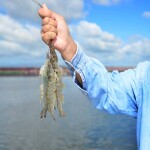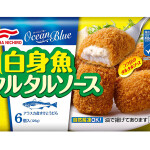Fish consumption in Japan is in decline and the country’s fishermen are catching less product and “aging out,” but while on the surface it appears this country that has such a strong affinity with the ocean and where seafood is part of the cultural identity is doing very little to address these problems, change is happening and on an increasing scale.
At the SeaWeb Seafood Summit 2016 (SWSS16) in Malta, Ana Chang of research consultancy Concept Hatchery, assured delegates that while the actions in Japan were “barely visible” from a Western perspective, the sustainability movement was most definitely building momentum. She said it is, though, important for observers to understand four principles of Japanese culture: risk aversion, “wa,” “nemawashi” and consensus.
Chang explained that Japan is a very risk adverse country and that risk management dominates its decision making. Wa is a Japanese concept that’s commonly translated into English as “harmony” and promotes a sense of peace within society, as such wa inhibits individuals from speaking up and telling others to take action. Nemawashi, meanwhile, is essentially the informal process of laying foundation for change by talking to everyone before taking action.
The Japanese will invest large amounts of time to learn and discuss an issue before implementing change, she said.
“So while a westerner looking at Japan sees endless rounds of discussions and no actions, they are actually witness to nemawashi. There is a lot of momentum gathering under the surface.
“There’s a strong search for detailed information by the Japanese people as they try to establish what’s really happening.”
In November, for example, 300 people took part in a 6-hour open symposium organized by consultancy group Seafood Legacy to hear about issues connected to seafood sustainability. As well as being attended by members of the seafood industry, the restaurant trade and government groups, the meeting also attracted many members of the general public.
“This was because they cared and wanted to know more,” said Chang. “There is strong thirst for more information – to understand what’s really happening.”
Chang added that another important consideration is that as the population becomes more engaged in seafood sustainability, people will naturally “seek out the nuances” in the subject, they will want much more detail than an American or European might. Therefore, the broad categorizations such as traffic light labeling that Westerners see as convenient are generally perceived by the Japanese to be inaccurate.
“They are building consensus behind closed doors; building awareness and knowledge; talking to different players and stakeholders to make sure everyone has an equal measure of knowledge, so that decisions can be made together that minimize the risk. Then actions will be taken. That’s how it works in Japan,” she said.






